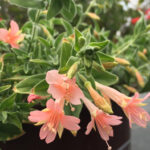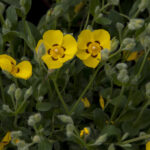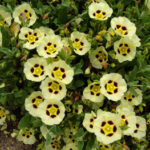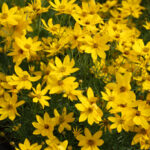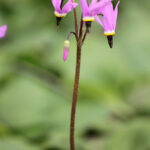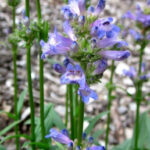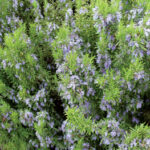Perennials are a versatile part of any garden, and there are many unsung selections you can plant and enjoy. There’s always a place for tall perennials that can serve as anchor a container arrangement or be the backstop in a garden bed.
And as for heat- and drought-tolerant perennials — they become more and more necessary every year due to high temperatures and changes in climate. Just keep in mind the old adage that “drought tolerant” means “drought tolerant once established.” You don’t want to neglect watering, especially in the beginning.
Read on for some of our favorite, underappreciated perennials.
This is a three-part series. Previous installments:
Part I: Groundcovers and short-statured perennials
Part II: Mid-height perennials and moisture-loving perennials
Heat-tolerant, drought-tolerant perennials
Coreopsis verticillata ‘Zagreb’ is bullet-proof, surviving in hot, dry conditions, according to according to Grace Dinsdale, owner of Blooming Junction retail nursery and Blooming Nursery wholesale nursery, both in Cornelius, Oregon. Cheerful yellow blooms last spring through summer on 12–inch high by 18–inch wide plants that need no dividing.
Dodecatheon hendersonii (broad-leaved shooting star) has a striking flower, takes dry to moist conditions, is small, and can be tucked anywhere, according to Mike Ridling of Sevenoaks Native Nursery, a wholesale grower in Albany, Oregon. It blooms February to June on leafless 12–18-inch stalks, followed by leaves that go dormant.
Formerly classified as Zauschneria, Epilobium cana ‘Woody’s Peach Surprise’ (12–18 inches high by 9–18 inches wide) and Epilobium cana ‘Bowman’s’ (1½–2 feet high and wide), are commonly called California fuchsia or hummingbird trumpet for the attraction by the nectar-sipping birds. The gray foliage and tubular flowers that last through summer and into fall are appreciated by humans, as are the drought tolerance, the upright consistent form and the easy care.
Halimium lasianthum, sometimes called the other rock rose, has returned to the Blooming Nursery lineup. “It is a great long-term plant with low to zero maintenance, a symmetrical habit, and when it blooms, from June to August, it is covered in bright yellow flowers with a reddish blotch in the middle,” Dinsdale said. The 2–3-feet-high by 3–5-feet-wide plants are drought-tolerant, and butterflies love them.
An intergenetic cross, Halimiocistus × wintonensis ‘Merrist Wood Cream’ has all the same tough properties as H. lasianthum, with larger, felted grayish olive foliage and larger blooms, according to Dinsdale.
Helleborus argutifolius (Corsican hellebore), the largest of the species hellebores, with a holly leaf, is evergreen with shiny attractive serrated leaves on a 3 foot high by 5 foot wide low bush. It brings texture to a full sun to open shade area beyond its late winter to early summer bloom season, according to Donna Giguere of Giguere Landscape Design (Portland, Oregon). It is more sun-tolerant than other hellebores, deer resistant and drought tolerant once established.
Leontopodium alpinium ‘Blossom of Snow’ (Edelweiss) has white flowers with a hint of yellow held high on 12–16 inch stems, contrasting with the silvery gray, narrow foliage. Ali Beck, production manager at JRT Nurseries (Aldergrove, BC, Canada), considers it low maintenance. It is compact, and will rebloom in fall if cut back in summer.
Penstemon rydbergii (meadow penstemon), a native, defies expectations in nursery settings, with its wide-ranging ability to thrive in habitats from moist to extremely dry, with some water needed in high heat situations. Ridling recommends it because it blooms May to August, depending on elevation, and grows to 8–28 inches high by 1–3 feet wide.
Rosmarinus officinalis’ Blue Spires’ was brought back into production at Blooming Nursery because of its hardiness. ‘Tuscan Blue’ and ‘Arp’ are industry standards, but Dinsdale explains that they have to be replanted every few years because they’re less winter hardy. “‘Blue Spire’ doesn’t,” she said. The tough, drought-tolerant plants bloom spring through summer, and mature 4–5 feet high by 2–3 feet wide.
Higher perennials
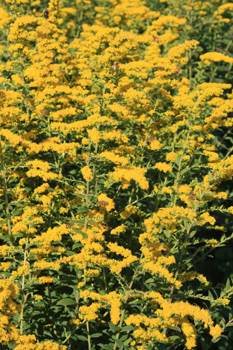
Anemone × hybrida ‘Honorine Jobert’ is an old-fashioned Japanese anemone, introduced in 1858, that does well tucked into a corner, according to Giguere. The white flowers with yellow stamens, summer through fall, float on 3–4 foot stamens over plants that remain low, and grows to 12–18 inches. It gets less rambunctious than other anemones, but confine it, as it does spread. It grows in shade, and is vigorous and low maintenance.
Dinsdale said she didn’t fully appreciate Solidago rugosa ‘Fireworks’ (rough goldenrod ‘Fireworks’) until last summer, when at three years, the 3 foot high by 3 foot wide drought tolerant plants were covered in tiny flowers that burst along 6-9 inch racemes, shooting in all directions. ‘Fireworks’ is a perfect name,” Dinsdale said for the long-lasting blooms that last until mid-fall.


